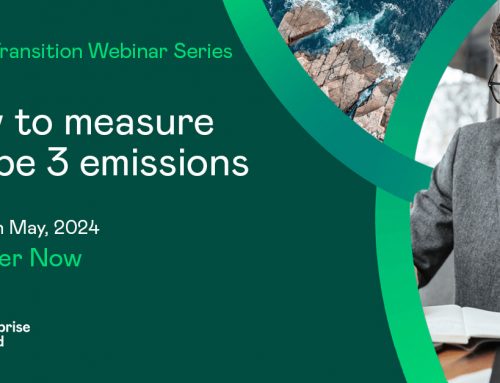When preparing your sustainability reporting according to the EU CSRD, there are four key decision points: –
Consider firstly the fact that: –
- ESRSs specify the information that an undertaking shall disclose about its material impacts risks and opportunities in relation to environmental social and governance sustainability matters.
- ESRS do not require undertakings to disclose any information on environmental social and governance topics covered by ESRS when the undertaking has assessed the topic in question as non-material.
ACTIONS needed now:
- Is your organisation within the reporting threshold limits.
- Understand the external requirements and your current internal corporate “sustainability” reporting status.
- Carry out a gap analysis based on your status and develop a roadmap to meet forthcoming regulatory requirements.
- Carry out a Double Materiality Analysis to establish the framework for your report (Regardless of the double materiality analysis, the following ESRS are mandatory: ESRS2, E1 and partially S1 for companies with more than 250 employees)
You need to be aware that: –
Mandatory disclosure requirements for all companies regardless of their internal analyses for ESRS 2 (General disclosures and datapoints that are required by EU law, ESRS E1 (Climate change) and partially ESRS S1 (Own workforce)
ESRS 1 describes the architecture of ESRS standards, explains drafting conventions and fundamental concepts and sets out general requirements for preparing and presenting sustainability-related information.
ESRS 2 establishes Disclosure Requirements on the information that the undertaking shall provide at a general level across all material sustainability matters on the reporting areas governance, strategy, impact, risk and opportunity management and metrics and targets.
Below we have included a brief description of parts of ESRS 1 and ESRS 2.
ESRS 1 specifies and defines the materiality assessment as the starting point for sustainability reporting under ESRS. In these standards materiality has two dimensions namely: impact materiality and financial materiality. It is important to be aware that the terms “material” and “materiality” are used throughout ESRS to refer to double materiality.
Quoting directly from the ESRS
assessments are inter-related and the interdependencies between these two dimensions shall be considered. In general, the starting point is the assessment of impacts although there may also be material risks and opportunities that are not related to the undertaking’s impacts. A sustainability impact may be financially material from inception or become financially material when it could reasonably be expected to affect the undertaking’s financial position financial performance cash flows its access to finance or cost of capital over the short- medium- or long-term. Impacts are captured by the impact materiality perspective irrespective of whether or not they are financially material.
Thus, there is a major responsibility for reporting organisations to get this (double) materiality assessment right the first time; otherwise, an organisation’s whole system will be built on a foundation of sand.
What do you assess as being material?
When needed for a proper understanding of an organisation’s material impacts, risks and opportunities, you shall disaggregate your reported information:
- by country when there are significant variations of material impacts risks and opportunities across countries and when presenting the information at a higher level of aggregation would obscure material information about impacts risks or opportunities
- by significant site or by significant asset when material impacts risks and opportunities are highly dependent on a specific location or asset.
If your organisation concludes that climate change is not material and therefore omit all disclosure requirements on Climate change, you then shall disclose a detailed explanation of the conclusions of your materiality assessment with regard to climate change, including a forward-looking analysis of the conditions that could lead you to conclude that climate change is material in the future.
ESRS 2 is strongly prescriptive in its specified requirements – a non-exhaustive list of such requirements includes: –
- how your organisation prepares your sustainability statement, including the scope of consolidation, the upstream and downstream value chain information and, where relevant, whether you have used any of the options for omitting information.
- disclose information about the sources of measurement uncertainty (for example, the dependence of the amount on the outcome of a future event, on a measurement technique or on the availability and quality of data from the entity’s upstream and/or downstream value chain); and you will need to
- disclose the assumptions, approximations, and judgements that you have made in measurements. This will include an uncertainty assessment on scientific, model and parameter uncertainties where applicable.
- disclose information about the integration of your sustainability-related performance in employee incentive schemes.
- disclose the main features of your risk management and internal control system in relation to your sustainability reporting process.
- report on how the interests and views of your identified stakeholders are taken into account by the undertaking’s strategy and business model.
What else is important?
Disclosure Requirements in ESRS 2, in topical ESRS, and in sector specific ESRS are structured into the following reporting areas:
Governance: The processes, controls and procedures used to monitor, manage, and oversee impacts, risks and opportunities facing your organisation.
Strategy: How your undertaking’s strategy and business model interact with your material impacts, risks, and opportunities, including how you address these impacts, risks and opportunities.
Impact, risk, and opportunity management: the process(es) by which you:
- Identify your impacts, risks, and opportunities and assess the (double) materiality.
- Manage material sustainability matters through policies and actions.
Metrics and targets: Your organisational performance, including targets you have set and your progress towards meeting them.
Let’s take an example of one element which you will have to disclose.
“Disclosure Requirement: Strategy, business model, and value chain”
And now, taking a smaller part of this disclosure on the business model and value chain, you shall consider:
- Your key activities, resources, distribution channels and customer segments.
- Its key business relationships and their key characteristics, including relationships with your customers and suppliers.
- The cost structure and revenue of its business segments.
- The potential impacts, risks, and opportunities in your significant sector(s) and their possible relationship to your own business model or value chain
And noting that the business model includes what exactly? What is a business model?
A business model is the concept of how a company aims to make a profit. There is no agreed standard definition, a business model broadly aims to answer the question of “who” contributes, “how” to, and “which activities” create value to customers and profit to the company. Business models are the starting point for a company to define how it plans to generate profit.
Existing business models often need to be adjusted to the changing environmental and demand patterns.
Analysing business models means looking at several core elements, including the (bundle of) product/services, your company’s process/infrastructure for value creation, revenue streams and cost structures, the customer interface, and the broader network of the business.
Our double materiality assessment should review our:
Value proposition, Customer segments, Customer relationships, Channels, Key Resources, Key Activities, Revenue streams, Cost structures and Key Partnerships as shown on the list below.
- How we create value for our customers with the products and services we offer.
- Our most important customers/customer groups or target groups, respectively.
- How we build, keep, and grow our customer base.
- How the products/services are sold and delivered to our customers/markets.
- What physical, financial, and human resources are required to offer our products/services?
- Which are the most important activities of our core business.
- How the products/services are sold and delivered to our customers/markets.
- Sources and structure of revenues generated by our products/services.
- Broader network, supply chain.
You will also need to distinguish between:
Upstream refers to all the activities needed to gather the materials required to create a product or service.
Downstream process includes activities that take place after the product or service has been finalised, (for example logistics – can we – in future use rail for our finished product distribution rather than trucks?)
Midstream: our product (or service) build/manufacture.
The impetus for the business model self-examination under CSRD is motivated by REGULATION (EU) 2020/852 on the establishment of a framework to facilitate sustainable investment, or the EU Sustainability Taxonomy regulation, which is a Grean Deal initiative.






